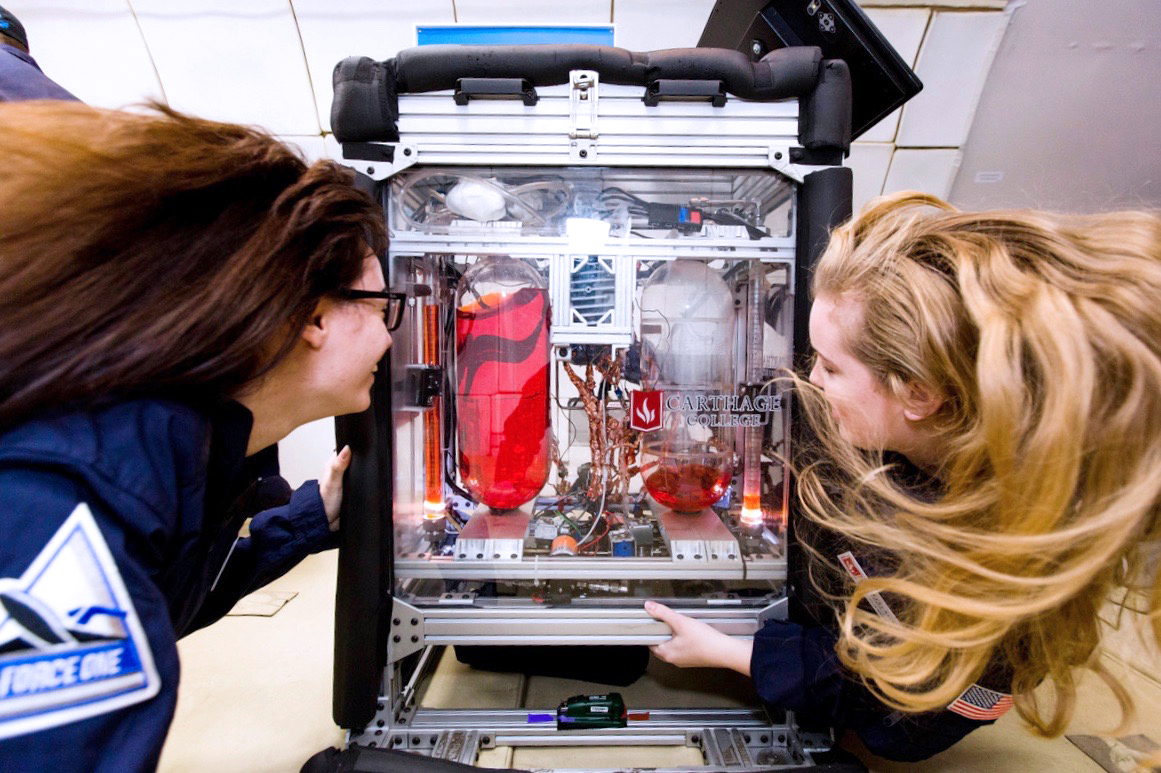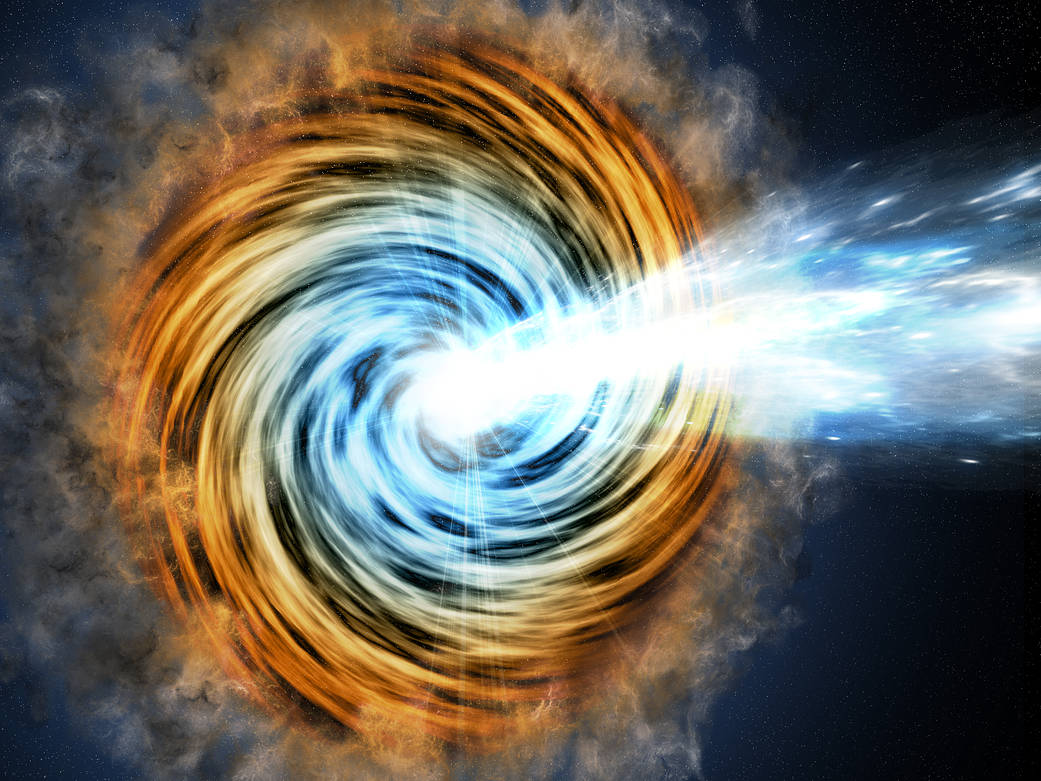Caroline Anderson
University of Central Florida
Numerical Evaluation of Entry System Trajectory Control via Active Porosity Control of Transpiration Cooled Thermal Protection System
Jaren Ashcraft
University of Arizona
Advanced Physical Optics Modeling of Spaceborne Optical Systems
Jennifer Bates
University of Maryland, College Park
Design of a Langmuir Probe to Characterize Millimeter-Scale Orbital Debris via Plasma Solitons
Marquise Bell
William Marsh Rice University
Multifunctional Composite Textile Materials for Advanced Spacesuits
Jared Blanchard
Stanford University
Invariant Funnels for Robust Interplanetary Transfer, Flyby, Capture, and Landing
David Bombara
University of Nevada, Reno
Design, Fabrication, and Control of a Robotic Gripper Powered by Compliant and Self-Sensing Twisted String Actuators
Nicholas Boynton
University of Chicago
Electrolytes Containing Dynamic Covalent Networks for Thermo-Electrochemical Cells
John Bradburn
State University of New York, University at Albany
Enabling Low-power Smart Sensors with Machine Learning Calibration
Julia Briden
Massachusetts Institute of Technology
Computationally-Efficient Large Divert Guidance
James Brouk
Texas A&M University
Efficient and Robust RFS-SLAM with Probabilistic Extended Feature Models
Josh Cannon
Brigham Young University
Passively Actuated, Triangular Fin Array for CubeSat Thermal Control
Kelsey Cavallaro
Georgia Institute of Technology
Low Temperature, High-Energy Lithium Metal Batteries Enabled by Lithium Alloy Materials
Efaine Chang
Stanford University
Aftshell Radiative Heating During Planetary Entry
Will Clay
University of California, Santa Barbara
Improving the Spectral Resolution of UVOIR MKIDs through Phonon Engineering and Low Noise Electronics
Brandon Colon
Georgia Institute of Technology
Generative Design of Additively Manufactured Tanks for Small Spacecraft Propulsion Systems
Kyle Craft
Texas A&M University
Robust Estimation of Uncertain Dynamic Systems using Outer Probablility Measures
Andrew Denig
Stanford University
Kinetic Models of the Facility Effects and Beam Neutralization for High-Power Electric Propulsion Systems
Kaytie DeWitt
South Dakota School of Mines and Technology
Employing Experimental and Analytical Methods to Understand the Ultrasonic Spot Welding Process for Thermoplastic Polymers to Guide Joint Design
Holly Dinkel
University of Illinois at Urbana-Champaign
Instance-Aware Semantic Mapping for Robotic Caretaking in Space Habitats
David Drewniak
Penn State University
Increasing Performance of Hybrid and Solid Motors using Large Ionic Complex Propellants
Travis Driver
Georgia Institute of Technology
Intelligent Perception for Autonomous Characterization and Relative Navigation of Small Bodies
Daniel Engel
University of Illinois at Urbana-Champaign
An Approach for Assessing the Entry Performance of Different Direct Force Control Vehicle Configurations During Mars Entry
Sophia Eristoff
Yale University
Increasing the Technology Readiness of a Novel, Scalable Electro-Responsive Soft Actuator
Mitchell Gosma
University of Illinois at Urbana-Champaign
Examination of In-Depth Pyrolytic Coking Effects on Porous Carbon Preform Material
Margaret Hansen
Carnegie Mellon University
Autonomous Detection and Navigation of Craters and Other Negative Obstacles for Planetary Rovers
Benjamin Hatanpaa
California Institute of Technology
Low Noise Millimeter Wave Amplifiers for Space Science and Technology: A Study of Hot Electron Noise
Matthew Hoeper
Purdue University
Liquid-Vapor Diagnostics in Rotating Detonation Combustors for Liquid Rocket Engines
Zachary Huber
Cornell University
Advancing Microwave Kinetic Inductance Technology for Cosmology and Astrophysics Applications
Jamal Husseini
University of Massachusetts, Lowell
Integration of Manufacturing-Induced Variation in Multiscale Analysis of Composite Aerospace Structures
Nicholas Kosan
Princeton University
Dispersion Compensation of Mid-Infrared Frequency Comb Spectrometer for Planetary Science
Victoria Kravets
University of Colorado, Boulder
A Validated Tool to Model Astronaut Neurovestibular Adaptation to Altered Gravity
Derek Kuldinow
Stanford University
High-Fidelity Modeling of High-Energy Density Plasma Systems for Fusion Propulsion
Stephen Lantin
University of Florida
Digital Twins for Controlled Environment Plant Production in Space
Luis Ledezma
California Institute of Technology
Next Generation Integrated Coherent Sources from Visible to Mid-Infrared Using Nanophotonic Lithium Niobate
David Lund
Missouri University of Science and Technology
Multiscale, Multiphysics, and Multifidelity Modeling and Simulation of Plasma-Surface-Dust Interactions for Lunar Exploration
Matthew Lynch
University of Michigan
Localized Radiation-Induced Damage Mitigation in Metal-Nanomaterial Composites with High Aspect Ratio Pathways
Alexandra Marnot
Georgia Institute of Technology
3D Printing of Dense Regolith Suspensions for Construction and Weatherability at Ultra-low Temperatures
Bailey McFarland
Utah State University
Develop Human Brain Organoid-on-Chip Testbed and Novel Antioxidant Countermeasure Cocktails for In-Flight Brain Damage
John Nganga
University of Notre Dame
Terrain-Aware Control and Model-Driven Learning for Quadrupeds in Low Gravity
Richard Nile
Arizona State University
Functionalization of Nanoporous Covalent Organic Frameworks to Enhance Processability and Broaden Separation Applications
Logan Pettit
University of Nebraska, Lincoln
Thermal Management of Extreme Heat Fluxes; Innovative Dual-Channel Flow Boiling with Femtosecond Laser Functionalized Metallic Surfaces
Cameron Pittman
Massachusetts Institute of Technology
Distributed Collaboration and Coordination for Planetary Exploration Mission Support
Anthony Polloreno
University of Colorado, Boulder
Characterizing Quantum Devices Using the Principles of Quantum Information
Kristen Price
University of Kentucky
Spallation Effects in TPS Models
Amy Quartaro
Virginia Polytechnic Institute & State University
Minimal Representation State Estimation of Rigid/Flexible Structural Elements for Autonomous Assembly and Servicing of Lunar Surface Assets
Allyanna Rice
Ohio State University
REFORM: REconfigurable antennas FOR wearable space Medical diagnostics
Rachel Rohde
University of California, Berkeley
Leveraging Spin Transition Mechanisms in Metal-Organic Frameworks for Enhanced Selectivity for CO in a Series-Bosch Reactor
Megan Rose
University of Colorado, Boulder
A Framework for Preventing and Recovering from Cascading Failure Events for Space-Based DC Power Systems
Justin Shafner
University of Maryland, College Park
Understanding and Predicting Dominant Physics in Supersonic Retropropulsion
Michaela Spaulding
University of Alabama, Huntsville
Rapid Injector Advancement for Rotating Detonation Rocket Engines
June Stenzel
Massachusetts Institute of Technology
Applying a Model-Based Systems Engineering Approach to Simulation and Testing for Ground and Space Applications
Bharath Tata
University of Colorado, Boulder
Gas Separations for Lunar ISRU with Supported Ionic Liquid Membranes
Nicholas Tjahjono
William Marsh Rice University
Virtual Prototyping of Multifunctional Boron-Nitrogen Nanostructures and their Composites for Extreme Space Environments
Hannah Tomio
Massachusetts Institute of Technology
Reconfigurable, Multipurpose Detection Systems for Small Satellites
Daniel Troyetsky
Stanford University
Real-Time Predictive Modeling of Hall Effect Thrusters for Thruster Performance Estimation and Optimization
Collin Whittaker
University of Michigan
Robust Optimization of Electrospray Thrusters through Reduced-Fidelity Modeling and Rapid Prototyping
Taylor Wood
Penn State University
Characterizing and Controlling Thin-film Stresses as an Engineering Tool for Feature Modification in Next-generation Optics
Renee Woodruff
Texas A&M University
Enhancement of Long-Term Behavioral Health through Virtual Reality Technologies






























